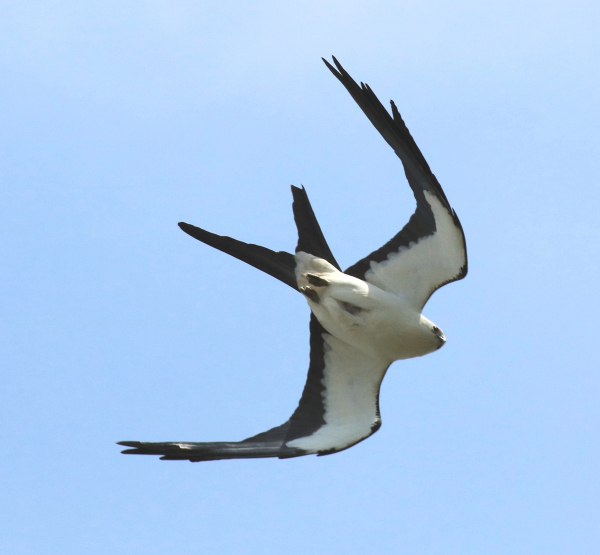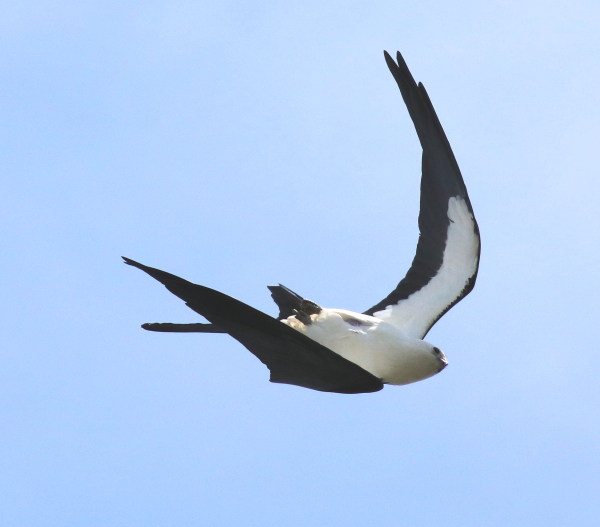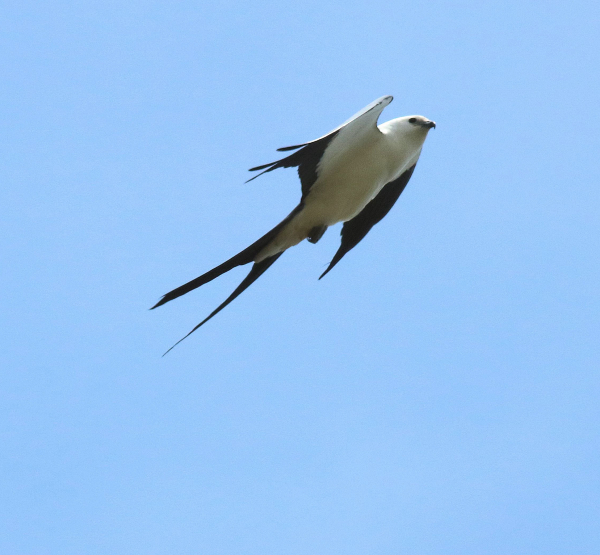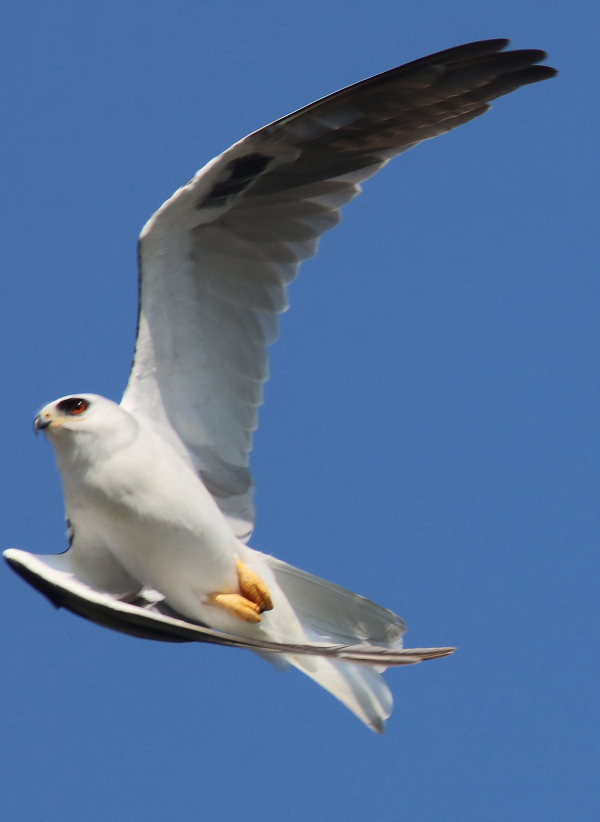Kites are beautifully aerodynamic with their long pointed wings and a long tail that gives kites an especially elegant look in flight, often rivaling and even surpassing falcons for their aerial prowess. Swallow-tailed Kites and Mississippi Kites are mostly limited to the southern half of the United States during spring and summer months, although White-tailed Kites can be seen throughout the year. Kites provide photographers with wonderful opportunities to document them in flight, plus they offer the potential for extreme flight photos.

As if with an element of joy, a glide turns into a dive with a surprising twist and half-flip as a Swallow-tailed Kite pulls its wings in to use inertia and gravity to guide its forward motion.
|
There is really no way to plan for radical kite photos; it’s a matter of being aware of the potential that kites offer, and to be prepared when opportunities present themselves. Usually, radical kite flights can be attributed to hunting, but sometimes they seem to be just having fun. There may also be some opportunity for radical flight photos if you encounter kites during a mating episode, but clearly, taking dynamic kite photos is a matter of being in the right place at the right time – and being ready and alert.
Although this article is geared toward kites, you can certainly use this information when photographing other birds including raptors, swallows, swifts, nighthawks, and others that do a lot of diving, high-speed twisting and turning, and other aerial acrobatics.
Radical Flights

A fast shutter speed, accurate autofocus, and attention to a kite’s flight through your camera lens can combine for some radical flight photos.
|
Swallow-tailed Kites can be especially acrobatic fliers; they are built for it, and when in flight they seem to be in constant motion, gliding on the wind, tipping their tail gracefully to balance, then diving, turning, dipping, and streaming on the wind. Even while hunting these Swallow-tailed Kites are graceful and seem to be weightless; they grab a flying insect with a talon and pass it to their mouth in a single movement. And as if with a joyful zest a glide turns into a dive with a surprising twist and half-flip as it pulls its wings in to use inertia and gravity to guide it forward; then, righting itself the kite turns upward into a peaked rise before using its wings to propel it forward again.
Who knows when that dive begins or that the kite will fold its wings and roll over in the air to turn its back to the ground and its belly to the sky? But you gotta be ready for things like that, follow the birds’ progress as long as they are within range, then watch for the next opportunity.

As it pulled out of the dive, the kite zoomed upward to a peak altitude before settling into a gliding flight again. Following the bird’s movements accurately was essential to documenting its flight postures.
|
White-tailed Kites tend to be a little more practical in their flights and much more apt to hover, but as one breaks out of a hover into a strong west wind, the result may surprise you as it folds a wing to redirect itself into the gale. White-tails utilize hovering to locate and pursue small mammals and other prey, unlike the insect-eating Swallow-tailed and Mississippi Kites. Nonetheless, ya gotta be ready when you’re in position and a hover turns into fast action – don’t miss it.
Radical Photos
Obviously, from a technical point, you want to be ready with a fast shutter speed. The birds are in flight against the sky, so there should be plenty of light, and if you use an f7 or f8 for example, you should have plenty of shutter speed to stop most or all movement. However, some photos that show some blurred motion can also be effective, but that’s a choice you usually make after your photo session is over, as you review phots during editing process.

As a White-tailed Kite breaks out of a hover into a strong west wind, a resulting photo may surprise you as the aerodynamic raptor folds a wing to redirect itself into the gale. Be ready, have fun, and good luck!
|
Similarly quite obvious, you need to rely on your autofocus with split-second timing involved, but it helps if you are already following the bird, keeping the autofocus active and spot on the action, ready for when the kite makes a turn, a dive, or twists into a barrel roll. Keep in touch with the bird, its motions, and try to anticipate a burst of action – or at least be ready and aware.
Does a zoom lens help? It depends on how close you are more than anything. If you find yourself keeping the zoom at full magnification, a telephoto lens will be as good and may provide faster shutter speeds in a given lighting scenario. A telephoto also simplifies the photo action by taking the zoom out of the equation, but a zoom adds a dimension that may be attractive for many photographers. Then too, many photographers use a zoom lens exclusively, and that’s fine too; just emphasize the positive aspects of a zoom lens in that case.
One more thing; it’s not technically related, but physically relevant: Let your adrenaline kick in to speed up your reaction time, increase your level of excitement, and add to the potential for exceled results. At the same time, enjoy the experience, have fun, and Good Luck!
Article and photographs by Paul Konrad
Share your bird photos and birding experiences at editorstbw2@gmail.com